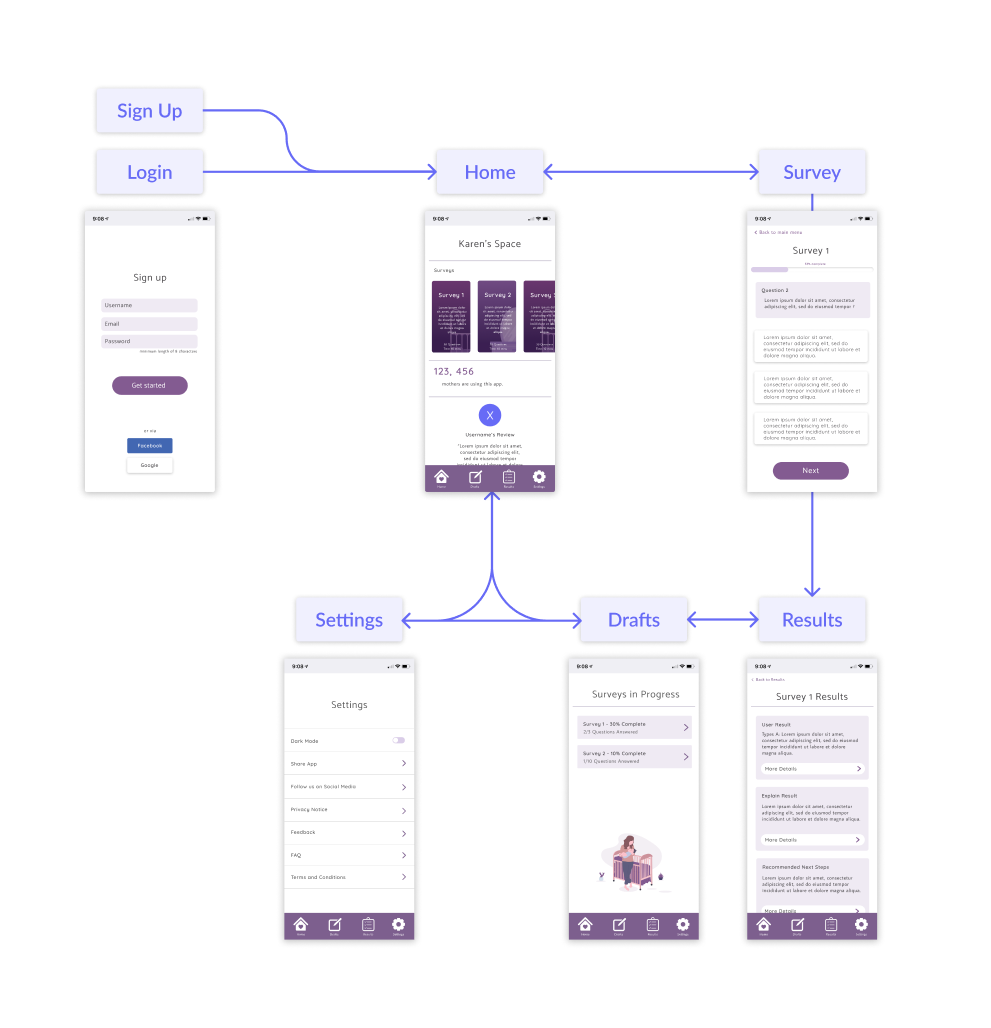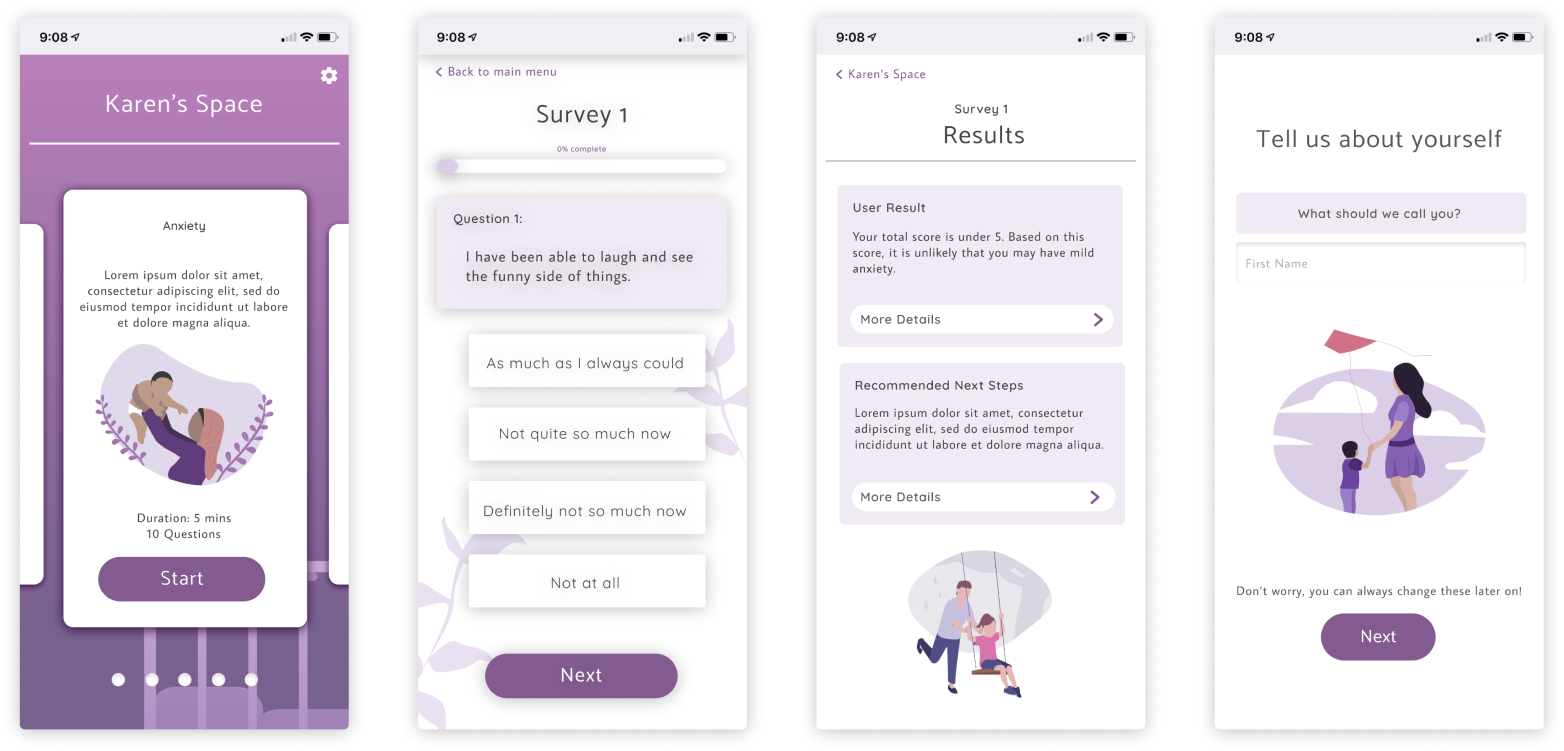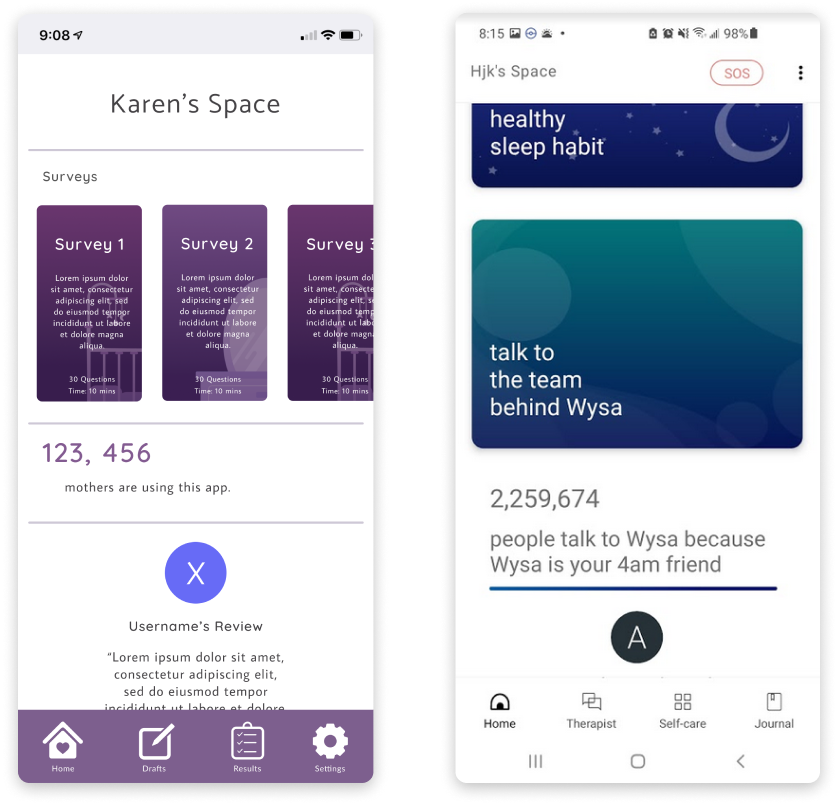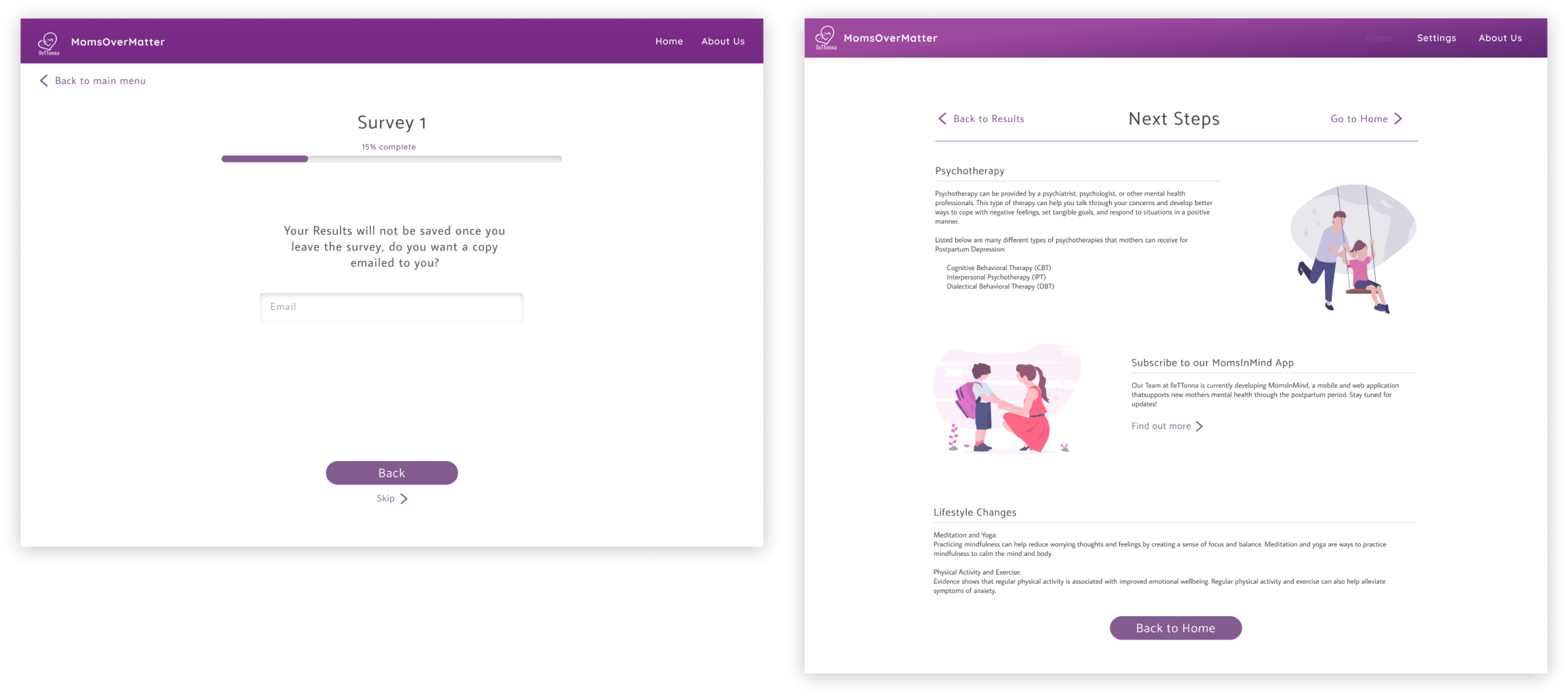Case Study
MomsOverMatter

At a glance...
Role
UX Designer
Team
6 designers
6 developers
1 project manager
Duration
1 Year
Tools
Figma
Background
In the spring of 2020, I joined lleTTonna, a startup aimed at developing mental healthcare technology for the benefit of those in the pregnancy and postpartum period. At the time, there were 6 designers and 6 developers tasked with bringing MomsOverMatter (MOM) to life.
Key Issues
- Underdiagnosis of postpartum depression (PPD) and anxiety (PPA)
- Lack of central PPD support resources
Outcomes
- A site that facilitates the completion of clinical questionnaires
- Increased ease of access to PPD and PPA resources
01.
Why MomsOverMatter?
Postpartum depression (PPD) is the most common complication of childbirth, affecting 1 in 5 women. Untreated PPD may also increase the risk of future depressive episodes and cause negative rippling effects on children. PPD is severely underdiagnosed and undertreated as well, with many mothers lacking the time and resources to access proper care outside of medication.
To recognize these issues, MOM easily facilitates the clinically approved Edinburgh Postnatal Depression Scale (EDPS) and General Anxiety Disorder-7 (GAD-7) questionnaires and provides relevant steps and resources to help those in the postpartum period. It’s important to note that MomsOverMatter is not a diagnostic or intervention tool. We simply aimed to increase the accessibility of these two questionnaires and point users in the right direction should they find themselves struggling.
02.
Initial Understanding
MOM was planned to be both a web and mobile application. After much research into both the competitive landscape and postpartum mental health as well as many meetings with both designers and developers, we came up with a set of features and made the following user flow:

Users would create an account and keep track of their surveys and results. It seemed simple enough. However, through discussions with our developers, we realized one crucial aspect of MOM that went overlooked until now: it would really only be used once.
03.
A Pivot or Two
We were working under the impression that there would be repeat users, but this made little sense. What incentives did users have to come back after completing the surveys? It was unlikely that they would ever have incomplete surveys to finish in the first place—there were only two and both were fairly quick.
With this, we came to the conclusion that the features we thought were simple actually made MOM unnecessarily bloated. We stripped it down to only the core functions: the survey and the results.

04.
Skimming the Bloat
We removed the drafts and login sections entirely, though we did retain some semblance of the sign in process by asking for a name and, optionally, an email address to send results to. Removing the account creation also helped our developers since they didn’t need to work on storing the information anywhere. The last thing we removed was the navigation bar at the bottom—it wasn’t necessary for such a linear app as MOM.
Reiterating...
This opportunity brought about a chance to redesign the overall look of our app as well. It was a big relief—our initial designs resembled Wysa, a competing mental health app, far too much for our liking. Additionally, the whole idea of a user counter and review display at the bottom would likely be ineffective as we would have few users to begin with and even less reviews.
While we were streamlining our mobile app, our web version had unfortunately suffered through some neglect. When we finally got around to updating the look and functionality of the web version, our project leads brought up another good point: Why would a mother download a one-time use app?
This question led to another pivot as we realized that we should have focused more on the web application in the first place. At most, mothers would revisit the surveys every now and then, which still rendered the downloading of an entire app unnecessary. With this, we put all our efforts into our web application and made sure it was responsive as well.

05.
Minimum Viable Product
After these changes, we launched our MVP late August 2020. At this point, we still retained the option to email users their results, but that would soon change.

We were working on other projects in parallel with MOM, so after it was launched our development team set to work on those while the design team started another one. It would be some time before we revisited MOM, but this time we’d do it with the help of some subject matter experts.
06.
Consulting the Doctor
Dr. Ryan van Lieshout was invested in our work seeing as he was involved with the inception of lleTTonna itself. As a consultant and stakeholder, he helped to provide and edit much of the copy on MOM, but he had not yet seen it in the context of our web application. We decided to run a moderated usability test with him before announcing our official launch in May 2021.
We had rebranded since August 2020 so we updated the prototype’s look to match.
Though most of his feedback pertained to copy, which was still very useful, one of his suggestions that had the most impact on our design was that we might include a ‘How to Start to Overcome’ link on each page of the survey screen so that it might save users from leaving the website.
Essentially, the survey itself could be a barrier for depressed mothers who just want to get to the resources and not be forced to go through a survey telling them something they already know. So the survey was made optional and the resources were placed upfront. This change was reflected in our official launch as of May 2021.
07.
Final Thoughts
I learned so much over the course of this project. Everything from prototyping to working with developers—it was very insightful and I’m grateful for the opportunity to work for a cause such as this with some very talented people.
In terms of next steps, I’d like to see more user research and testing. Having critical feedback from actual mothers going through the postpartum would be invaluable.
Please check out the current iteration of MOM live at momsovermatter.ca!
Thanks for stopping by
Feel free to contact me for any questions about me, my work or just to chat!
Made with lots of music in the background

